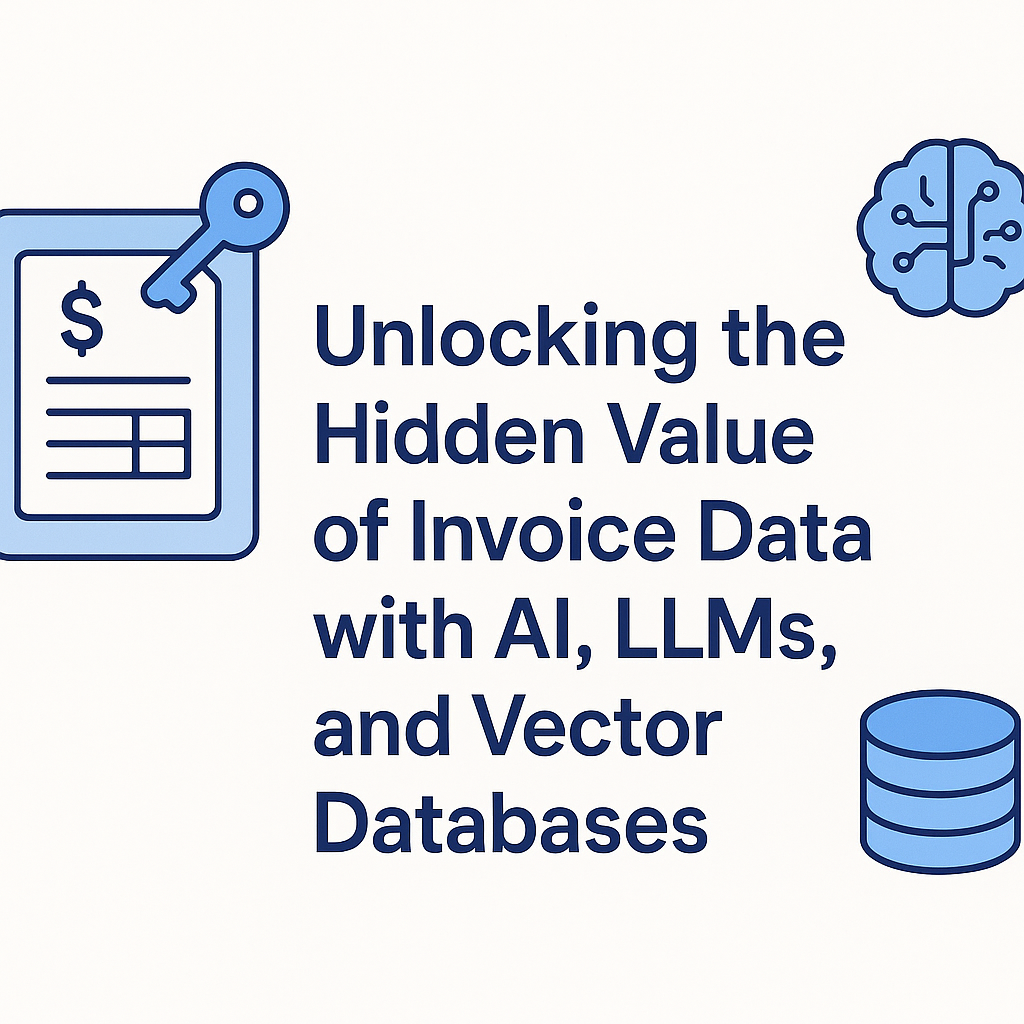Invoice data has long been treated as a necessary but dull back-office function. Today, that narrative is changing. With the rise of AI and large language models (LLMs), companies are turning raw invoice documents into strategic business insights. By combining powerful document AI, vector search, and semantic analysis, we're witnessing a revolution in how financial data is understood and utilized.

Unlocking the Hidden Value of Invoice Data with AI, LLMs, and Vector Databases
Every invoice contains more than just numbers. It holds patterns, purchasing behavior, cost-saving opportunities, and valuable vendor insights. Traditionally, extracting and analyzing this data was a manual and error-prone process. But with the recent advances in artificial intelligence, particularly with large language models (LLMs) and vector databases, a new era of intelligent invoice understanding has arrived.
From Document Parsing to Semantic Understanding
At Invoice Parse, we’ve moved beyond OCR. By using AI-powered tools like Azure Document Intelligence and OpenAI's language models, we can extract structured data such as vendor name, invoice amount, and due date, but also unlock meaning from unstructured content. This includes terms, item descriptions, and special clauses buried deep inside PDFs or scanned documents.
To make sense of this unstructured information, we generate semantic embeddings—numerical representations of text—using models like text-embedding-3-small. These embeddings are stored in a vector database (such as PostgreSQL + pgvector) and enable us to perform semantic search across millions of invoice records.
How Vector Search is Revolutionizing Invoice Queries
Imagine asking your system: “Show me all invoices related to electric vehicle parts from 2023.” Traditional keyword-based search would struggle. But with a vector-powered AI search engine, your query is understood in context, not just literal keywords.
Here’s how it works:
- 1. Embedding Generation: Invoice texts are transformed into high-dimensional vectors using an LLM-based embedding model.
- 2. Storage in Vector DB: These vectors are stored efficiently with metadata in a PostgreSQL-compatible vector store.
- 3. Semantic Query Matching: When you type a natural language query, it’s embedded and compared to existing vectors to find the most relevant matches, even if the wording is different.
Benefits for Finance, Procurement, and Business Intelligence Teams
With this AI-powered pipeline, teams can:
- Automate audit trails and detect anomalies based on contextual clues.
- Discover spending trends across vendors, categories, and time periods.
- Enable natural language search for financial analysts—no SQL needed.
- Drive smarter decisions using clean, enriched invoice data for analytics dashboards (e.g., Power BI).
The Future: AI-Native Finance Workflows
We believe invoice data will become a core pillar of AI-driven finance operations. At Invoice Parse, we're building a bridge between raw PDF documents and real-time insights using AI agents, LLMs, and intelligent query engines. Our platform transforms invoice data into a living knowledge base—searchable, explorable, and actionable.
Whether you’re a small business automating your accounting or a large enterprise seeking cost intelligence, the combination of LLMs and vector search offers a glimpse into the future of financial automation.
Ready to see how it works? Try Invoice Parse for free and turn your invoices into intelligent assets.
